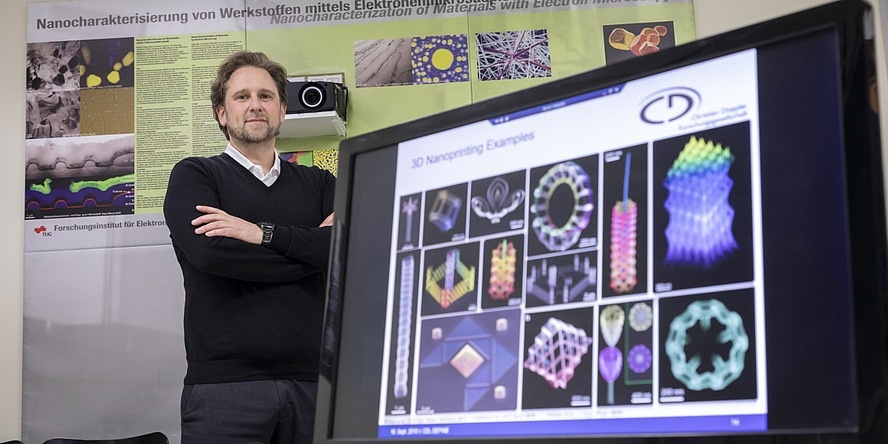Researchers from the Graz Centre of Electron Microscopy and the Institute of Electron Microscopy and Nanoanalysis at Graz University of Technology have made breakthrough advancements in the fabrication of complex, free-standing 3D nanoarchitectures, as reported in a recent article.
 Harald Plank from the Institute of Electron Microscopy and Nanoanalysis at TU Graz has been researching for over ten years how complex, free-standing 3D architectures can be produced in the nanometre range. Image Credit: Lunghammer - TU Graz
Harald Plank from the Institute of Electron Microscopy and Nanoanalysis at TU Graz has been researching for over ten years how complex, free-standing 3D architectures can be produced in the nanometre range. Image Credit: Lunghammer - TU Graz
These innovations, made by the group headed by David Kuhness, Verena Reisecker, and Harold Plank, include precise simulation and contamination-free production of nanostructures with significant optical properties, signify a leap forward in the field, opening new possibilities for applications in nanotechnology.
Additionally, they have eliminated all chemical contaminants that were included during the first manufacturing process without having an adverse effect on the 3D nanoarchitectures.
Trial-and-Error Procedure Becomes Unnecessary
Up until now, creating three-dimensional nanostructures was a laborious process of trial and error to achieve the correct optical characteristics. Finally, this endeavor has been abandoned.
The consistency between simulations and real plasmonic resonances of a wide range of nanoarchitectures is very high. This is a huge step forward. The hard work of the last few years has finally paid off.
Harald Plank, Associate Professor, Graz University of Technology
As of right now, this technique is the only one in the world that can be used to control and create complex three-dimensional structures on nearly any surface, with individual features smaller than 10 nm. In contrast, the tiniest viruses have a diameter of about 20 nm.
Plank added, “The biggest challenge in recent years was to transfer the 3D architectures into high-purity materials without destroying the morphology. This development leap enables new optical effects and application concepts thanks to the 3D aspect.”
Using optical tweezers or nanoprobes with sizes in the nanometer range is now feasible.
Precisely Controlled Electron Beam
The nanostructures are created by the researchers using focused electron beam-induced deposition. Under vacuum, the appropriate surface is exposed to particular gases. The gas molecules are divided by a narrowly focused electron beam, and some of the separated molecules solidify and stick to the target area.
Plank concluded, “By precisely controlling beam movements and exposure times, we are able to produce complex nanostructures with lattice- or sheet-like building blocks in a single step.”
Eventually, three-dimensional structures can be built by stacking these nano-volumes on top of one another.